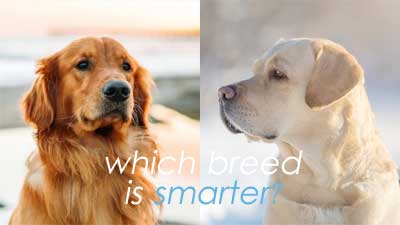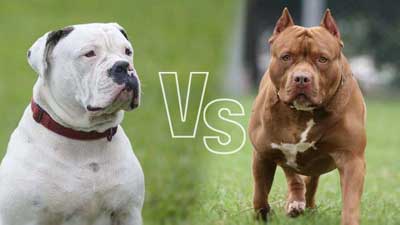- Size
- Smallest
- Small
- Small to Medium
- Medium
- Large
- Giant
- Characteristics
- Smartest
- Hypoallergenic
- Fluffy
- Best Guard
- Best Family
- Best for Kids
- Low Shedding
- Healthiest
- Police Dogs
- Most Calm
- Quietest
- Color
- White
- Black
- Grey
- Brown
- Blue
- Red
- Coat
- Hairless
- Short
- Long
- Origin
- Japan
- China
- Australia
- Germany
- Italy
- United States
- France
- Group
- Hound
- Terrier
- Herding
- Toy
- Working
- Sporting
Basset Hound vs. Bloodhound: What's the Difference?

Despite having a striking resemblance in appearance, the Bloodhound and Basset hound vary in different aspects. The two have a lot in common because they are hunters or scent-hound dog breeds. These two hound species are made up of other canine breeds bred in numerous places for the same reason.
Because of this, it can seem as though their character traits or behaviors are similar. But what differentiates these two different breeds, and what makes them unique?
The key distinctions between the Basset hound and Bloodhound are covered below.
Breed and Ancestry
As these two dog breeds were made for a similar purpose, their ancestries differ significantly. For instance, the Bloodhound is particularly a way older canine breed compared to the Basset Hound because it existed during medieval France. Meanwhile, the Basset Hound originated in Europe around the 1800s. It should give the impression that these dog breeds make excellent hunting partners, capable of following odors over considerable distances.
However, the Bloodhound was initially bred to prey on larger animals, whereas Basset Hounds were initially bred to hunt fur or bunnies. The Bloodhound is better at finding people or other pertinent odors and the Basset Hound was more of a companion dog.
Appearance
A Basset Hound and a Bloodhound can be regarded as being distantly related. A Bloodhound and a Basset Hound are physically distinct, albeit in a few key areas. For instance, the Basset Hound's legs are considerably shorter than the Bloodhound's. Additionally, Basset Hounds have a particular fur pattern and color, whereas Bloodhounds can only have one solid color. Each dog breeds feature cheeks and muzzles that droop and extraordinarily long, floppy ears.
The Bloodhound, however, has a more wrinkled and drooping expression than the typical Basset Hound. Finally, although both of these dogs have a distinctive appearance exclusive to the hound dog breed, the Bloodhound appears more wrinkled than the Basset Hound.
Size
Comparing the two demonstrates that Basset Hound is relatively smaller than the Bloodhound in height and build. The Bloodhound grows significantly in size, while the Basset Hound is known for having short legs and being petite.
The Bloodhound can grow to a height of 23-27 inches, depending on the sex, but the Basset Hound matures to a height of 11-15 inches. As you might presumably anticipate, there are also significant weight distinctions between them. For instance, the average Bloodhound weighs between 80 and 110 pounds, whereas the Basset Hound gains up to 40 and 80 pounds overall.
Behavior
Technically, they are related breeds. The Bloodhound and Basset Hound exhibit much of the same behaviors. Both canines prefer verbalizing and engaging with their families in a sweet approach. But compared to the typical Bloodhound, the Basset Hound indeed has a far higher propensity for food motivation, which is particularly helpful for training.
Although both the dogs make beautiful family pets, Basset Hounds are more challenging to train than typical Bloodhounds. Compared to the normal Basset Hound, Bloodhounds can instantly lose concentration due to their own nose, so educating them in an environment with minimal distractions is necessary.
Lifespan
The apparent size contrasts between the two may have caused you to presume they have each of their respective life spans. However, the lifespan of each of these dogs is 10 to 12 years on average. Due to several health conditions, the Basset Hound's lifespan is practically similar to that of a Bloodhound on average.
Summary
Basset Hound
Basset Hounds are a breed belonging to the hound family and have the characteristic appearance of having long, drooping ears. They have a short-haired coat that is mostly black but can occasionally be tri- or bicolored with tan and white. Although this breed is kept as a pet, it is not as energetic as some other dog breeds.
Bloodhound
Large in size, the bloodhound was bred in Belgium to hunt bears and deer. They are also referred to as Sleuth and St. Hubert hounds. They have an exceptionally keen sense of smell, which was later used to track humans by scent. Bloodhounds are particularly thick for their length due to their huge, ultra-strong skeleton. Although they have a short and harsh covering of fur, these dogs are very kind.
If you're contemplating what dog breed to adopt, it is important to note each of their characteristics and behaviors. Assess and consider what type of fur parent you are. It is also essential that your energy and lifestyle match since it will affect not only the mood of your dog but also the quality of their life.
You May Also Like
 Breed ComparisonThe Labrador vs. Golden Retriever Debate: Who's Really Smarter?
Breed ComparisonThe Labrador vs. Golden Retriever Debate: Who's Really Smarter? Breed ComparisonAlaskan Malamute vs. Siberian Husky: Which Is Better?
Breed ComparisonAlaskan Malamute vs. Siberian Husky: Which Is Better? Breed ComparisonPresa Canario vs. Cane Corso: Which Is the Better Guard Dog?
Breed ComparisonPresa Canario vs. Cane Corso: Which Is the Better Guard Dog? Breed ComparisonAmerican Bulldog vs. Pit Bull: Which is Stronger?
Breed ComparisonAmerican Bulldog vs. Pit Bull: Which is Stronger? Breed ComparisonMiniature American Shepherd vs. Australian Shepherd: Which Is Better?
Breed ComparisonMiniature American Shepherd vs. Australian Shepherd: Which Is Better? Breed ComparisonAlaskan Husky vs. Siberian Husky: Which Is Better?
Breed ComparisonAlaskan Husky vs. Siberian Husky: Which Is Better?